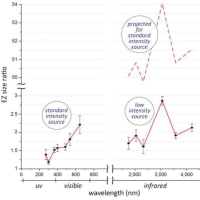1ファイザー コロナワクチン安全性試験の嘘 コロナ倫理医師団
コロナ倫理医師団 Doctors for COVID Ethics
私たちは30か国の医師および科学者であり、COVID-19に対応して、医療倫理、患者の安全、および人権を守ることを目指しています。
June 10, 2022、2022年6月10日
Did Pfizer Perform Adequate Safety Testing for its Covid-19 mRNA Vaccine in Preclinical Studies? Evidence of Scientific and Regulatory Fraud
Pfizerは、前臨床試験でCovid-19 mRNAワクチンの適切な安全性試験を実施しましたか? 科学的および規制上の不正の証拠
Analysis Publication 分析出版物
by Sasha Latypova 著者 サーシャ・ラティポワ
About the author: 著者について:
Alexandra LATYPOVA is serial entrepreneur and a founder of iCardiac Technologies, a company based on technology developed by students and faculty at the University of Rochester.
Alexandra LATYPOVAは、連続的起業家であり、ロチェスター大学の学生と教職員によって開発された技術に基づく会社であるiCardiacTechnologiesの創設者です。
It has received in excess of $7 million in venture capital funding and currently serves 6 of the top 10 pharmaceutical companies in addition to a broad range of clients across North America, Europe and Asia.
700万ドルを超えるベンチャー資本資金を受け取っており、現在、北米、ヨーロッパ、アジアの幅広いクライアントに加えて、製薬会社上位10社のうち6社にサービスを提供しています
Prior to iCardiac Technologies, Ms. Latypova worked at VirtualScopics, Inc., a technology spin out from the University of Rochester and Analysis Group, Inc., a Boston-based economics, financial and strategy consultancy.
iCardiac Technologiesの前は、ボストンを拠点とする経済、財務、戦略のコンサルタント会社であるRochester University and Analysis Group、Inc.からスピンアウトしたテクノロジーであるVirtualScopics、Inc.に勤務していました。
Abstract 要旨
The rushed “warp speed” development and approval of completely novel Covid-19 mRNA and DNA vaccines pushed on the people of the world has resulted until today in millions of reported injuries and thousands of deaths according to public health databases such as VAERS (US), EudraVigilance (EU), Yellow Card (UK) and others.
VAERS(US)、EudraVigilance(EU)、Yellow Card(UK)などの公衆衛生データベースによると、世界中の人々に押し付けられた完全に新しいCovid-19 mRNAおよびDNAワクチンの急いだ「ワープスピード」の開発と承認は、今日まで数百万の負傷者と数千人の死亡をもたらしました。
(訳注: 実際の死者は100万人以上、負傷者は1000万人以上と推定)
This article reviews some of the publicly available documents on Pfizer’s non-clinical development program and points out its deficiencies, omissions and gaps, which were very obvious, yet were never questioned by the regulators or other health authorities.
この記事では、ファイザーの非臨床開発プログラムに関する公開されている文書のいくつかをレビューし、その欠陥、脱落、ギャップを指摘します。これらは非常に明白でしたが、規制当局や他の保健当局から疑問視されることはありませんでした。
(訳注:
安全性評価を完全に無視した異常極まりない医薬品申請に対して、その欠陥を指摘し、申請を拒絶することなく承認を与え、国民に使用するのを許可した世界各国の保健衛生当局は、その職務義務を果たしておらず、完全に狂っています。また、そのようなものを推奨する医学界も同様です。これは、世界各国の政府・医学界が、世界を支配する金融権力(デジタル金融複合体)により支配されていることが原因です。ファイザーの新型コロナワクチンには、もともと安全性が存在しない純粋な毒なのです。)
The cursory nature of the entire preclinical program can be summed up as “we did not find any safety signals because we did not look for them.”
前臨床プログラム全体の大雑把な性質は、「私たちは安全性シグナルを探していなかったので、安全性シグナルを全く見つけませんでした。」とまとめることができます。
The omission of safety studies which are considered standard or even mandatory, and the scientific dishonesty in those studies which were performed are so obvious and glaring that they cannot be attributed to the incompetence of the manufacturers and regulators.
標準的または必須と見なされる安全性研究の省略、および実施されたそれらの研究における科学的不正は、製造業者および規制当局の無能に帰することができないほど明白で輝いています。
Rather, the question of wilful negligence must be raised.
むしろ、故意の怠慢の問題を提起しなければなりません。
The focus of my review is the scope and adequacy of the program of non-clinical assessment for a novel gene therapy vaccine, combined with a brief discussion of the relevant regulatory frameworks.
私のレビューの焦点は、関連する規制の枠組みの簡単な議論と組み合わせた、新しい遺伝子療法ワクチンの非臨床評価プログラムの範囲と妥当性です。
I did not dive deeply into the review of the results of specific studies.
特定の研究結果のレビューについては深く掘り下げませんでした。
My goal is to illustrate the complete breakdown of the regular process of drug development and approval, previously known to be rigorous and ethical, as well as the shocking negligence on the part of the regulatory agencies which are supposed to keep the pharmaceutical manufacturers honest.
私の目標は、以前は厳格で倫理的であることが知られていた、医薬品の開発と承認の通常のプロセスの完全な内訳と、製薬会社を正直に保つことになっている規制当局の役割の衝撃的な怠慢を説明することです。
In carrying out this review, I have made the following findings:
このレビューを実施するにあたり、私は次のことを発見しました。
- Pfizer’s program did not include a comprehensive end-to-end test of all components of the final approved product (the mRNA COVID-19 vaccine).
- ファイザーのプログラムには、最終的に承認された製品(mRNA COVID-19ワクチン)のすべての構成成分の包括的な徹底した試験は含まれていませんでした。
Instead, the studies included in the document package submitted to the FDA employed several variants and analogues of the product, whose comparability to the actual COVID-19 vaccine was not demonstrated or evaluated.
代わりに、FDAに提出された文書パッケージに含まれる研究では、実際のCOVID-19ワクチンとの比較可能性が実証または評価されていない、製品のいくつかの変化体および類似体が採用されました。
Thus, no comprehensive assessment of product safety can be made on the basis of these studies.
したがって、これらの研究に基づいて製品の安全性を包括的に評価することはできません。
2.A key determinant of a drug’s toxicity is its distribution within the body. However, with the mRNA active ingredient of Pfizer’s COVID-19 vaccine, this crucial aspect was never studied!
2.薬物の毒性の重要な決定要因は、体内での分布です。 しかし、ファイザーのCOVID-19ワクチンのmRNA活性成分では、この重要な側面は研究されていませんでした。
3.Pfizer claimed absence of potential for “vaccine-elicited disease enhancement” based on studies of an animal species that does not get sick from SARS-CoV-2.
3.ファイザーは、SARS-CoV-2で病気にならない動物種の研究に基づいて、「ワクチン誘発性の疾患増強」の可能性がないと主張した。
(訳注; 新型コロナウイルスで病気になる動物で研究しないと、ワクチンによる疾患増強が起きるかどうか分かりません。新型コロナウイルスで病気にならない動物による研究では、ワクチンによる疾患増強は、起きるはずがありません。こんな実験は、大嘘の詐欺であり、科学ではありません。)
4.The CDC, the FDA and Pfizer all lied about “vaccine staying at the injection site”; they knew all along that distribution of the vaccine throughout the body had to be expected.
- CDC、FDA、およびファイザーはすべて、「ワクチンが注射部位に留まる」ことについて嘘をついた。 彼らは、体全体へのワクチンの分布が予期されなければならないことをずっと知っていました。
5.Pfizer skipped major categories of safety testing altogether.
5.ファイザーは安全性試験の主要なカテゴリーを完全にスキップしました(飛ばしてしまった)。
6.Pfizer used dishonest and self-serving interpretation of regulatory guidelines to justify the shortcuts it took in routine safety testing.
6.ファイザーは、規制ガイドラインの不正で自己利益的な解釈を使用して、日常の安全性テストで採用した抜け道を正当化しました。
7.Both FDA and Pfizer knew about major toxicities associated with gene-therapy medicines in general, and they therefore cannot claim lack of anticipatory knowledge of these risks with the particular gene therapy medicine that is Pfizer’s COVID-19 vaccine.
- FDAとファイザーはどちらも、一般的な遺伝子治療薬に関連する主要な毒性について知っていたため、ファイザーのCOVID-19ワクチンである特定の遺伝子治療薬に関するこれらのリスクについての予測的知識の欠如を主張することはできません。
This points to intentional fraud and collusion between Pfizer and the regulators, who conspired to push this untested dangerous product on the market.
これは、このテストされていない危険な製品を市場に出すために共謀したファイザーと規制当局の間の意図的な詐欺と共謀を示しています。
Overall, therefore, both the manufacturer and the regulators behaved in a highly dishonest manner and conspired to push an entirely novel technology and product on millions of people without carrying out a single well designed safety assessment.
したがって、全体として、製造業者と規制当局の両方が非常に不正な方法で行動し、単一の適切に設計された安全性評価を実行することなく、まったく新しい技術と製品を何百万もの人々に押し付けるように共謀しました。
- Background 背景
The pharmaceutical R&D process is heavily regulated and divided into multiple phases, with the aim of de-risking new medicines, reducing potential for harm to human subjects, and ensuring a sufficient understanding of a new drug’s risks and benefits at every step.
製薬のR&Dプロセスは厳しく規制されており、複数のフェーズに分かれています。これは、新薬のリスクを軽減し、被験者への危害の可能性を減らし、すべてのステップで新薬のリスクとメリットを十分に理解することを目的としています。
The initial stage of this process are pre-clinical studies, in which a drug or biological product is tested on cell lines, small animals (e.g. mice and rats), and larger animals (e.g. monkeys).
このプロセスの初期段階は前臨床研究であり、薬物または生物学的産物が細胞株、小動物(例:マウスおよびラット)、および大型動物(例:サル)で試験されます。
The aim of pre-clinical studies is to demonstrate that the new medicine has the intended mode of action, as well as to characterize safety and efficacy to a level sufficient to decide whether clinical studies are warranted.
前臨床研究の目的は、新薬が意図された作用機序を持っていることを実証すること、ならびに臨床研究が正当化されるかどうかを決定するのに十分なレベルまで安全性と有効性を特徴づけることです。
For traditional vaccines, the non-clinical phase is the only phase of development where safety and toxicity are formally assessed.
従来のワクチンの場合、非臨床段階は、安全性と毒性が正式に評価される開発の唯一の段階です。
The US Food and Drug Administration (FDA) provides guidelines for different phases of development, which are described in FDA Guidance for Industry publications [1] and are coordinated globally via the International Conference on Harmonization (ICH).
米国食品医薬品局(FDA)は、開発のさまざまな段階に関するガイドラインを提供しています。これは、FDAの業界向けガイダンスの出版物[1]に記載されており、国際調和会議(ICH)を通じてグローバルに調整されています。
Separate sets of guidelines have been issued for conventional drugs (small molecules) and biological products, including vaccines.
従来の薬剤(小分子)とワクチンを含む生物学的製品については、個別のガイドラインが発行されています。
However, for more complex platforms, such as drug-device or drug-biologics combinations, more than one guideline will be applicable, depending on the composition of the finished product.
ただし、薬物-デバイスまたは薬物-生物学的組み合わせなどのより複雑なプラットフォームの場合、完成品の組成に応じて、複数のガイドラインが適用されます。
Since 2013, the FDA has been publishing guidelines that pertain specifically to gene therapy platforms.
2013年以来、FDAは、特に遺伝子治療プラットフォームに関連するガイドラインを公開しています。
The most recent FDA Guidance on early phase testing of gene therapy products was published in 2015 [2].
遺伝子治療製品の初期段階の試験に関する最新のFDAガイダンスは2015年に発表されました[2]。
Relevant aspects of this guidance and FDA position on this class of drugs are discussed at the end of this paper (see Section 2.7), which will demonstrate what the FDA and manufacturers knew about the risks associated with the class prior to 2020.
このガイダンスの関連する側面とこのクラスの薬剤に関するFDAの立場については、このペーパーの最後で説明します(セクション2.7を参照)。これは、2020年以前にこのクラスに関連するリスクについてFDAとメーカーが知っていたことを示しています。
The exact scope of each new medicine’s development program is negotiated in a series of meetings between the manufacturer and the FDA.
各新薬の開発プログラムの正確な範囲は、製造業者とFDAの間の一連の会議で交渉されます。
In general, the more novel the new drug or biologics entity, the more stringent and extensive the required testing will be, since with novel medicines the risks are not yet well characterized, and relevant safety data from prior experience with similar products are sparse.
一般に、新薬または生物製剤の実体が新規であるほど、必要な試験はより厳格かつ広範囲になります。これは、新薬ではリスクがまだ十分に特徴付けられておらず、同様の製品での以前の経験からの関連する安全性データが少ないためです。
Numerous unknown risks of potential harm to patients need to be assessed, and any risks that are identified in early tests must be thoroughly characterized in further studies, so that in the end a well-informed risk/benefit assessment can be performed.
患者への潜在的な危害の多くの未知のリスクを評価する必要があり、初期のテストで特定されたリスクは、最終的に十分な情報に基づいたリスク/利益の評価を実行できるように、さらなる研究で徹底的に特徴付けられる必要があります。
By necessity, a drug or a biological product must be deemed dangerous until proven safe.
必然的に、薬物または生物学的製品は、安全であることが証明されるまで危険であると見なされなければなりません。
Claiming that something is safe purely on theoretical grounds or because “all vaccines are safe” is not scientifically or ethically acceptable.
純粋に理論的な理由で、または「すべてのワクチンが安全である」という理由で何かが安全であると主張することは、科学的または倫理的に受け入れられません。
In addition, it should be noted the FDA has not historically permitted the testing of different versions of a candidate product under the same investigational new drug (IND) application.
さらに、FDAはこれまで、同じ治験中の新薬(IND)アプリケーションの下で候補製品の異なるバージョンをテストすることを許可していないことに注意する必要があります。
A well designed non-clinical testing strategy will include characterization of the product and its components in the following general categories of research (each of which is discussed further on in this article):
適切に設計された非臨床試験戦略には、以下の一般的な研究カテゴリーにおける製品とその成分の特性評価が含まれます(それぞれについてはこの記事で詳しく説明します)。
- pharmacokinetics, which concerns a drug’s uptake into, distribution within, and elimination from the body;
- 薬物動態。これは、体内への薬物の取り込み、体内での分布、および体内からの排除に関するものです。
- pharmacodynamics, that is, the drug’s mechanism of action, including primary and secondary (off-target) effects;
- 薬力学、つまり、一次および二次(オフターゲット)効果を含む、薬物の作用メカニズム。
- safety pharmacology and toxicology, including the characterization of risks for major organ classes: cardiovascular and central nervous systems, liver, kidneys, and blood, as well as other organ systems selected based on known or predicted effects of the product class or its components;
- 安全薬理学および毒物学。主要な臓器クラス(心臓血管および中枢神経系、肝臓、腎臓、血液、および製品クラスまたはその成分の既知または予測される影響に基づいて選択された他の臓器系)のリスクの特性評価を含みます。
- genotoxicity, that is, the drug’s proclivity to cause damage to genetic material (DNA);
- 遺伝毒性、つまり、遺伝物質(DNA)に損傷を与える薬物の傾向。
- carcinogenicity (proclivity to cause cancer);
- 発癌性(発癌性)。
- reproductive toxicology, which concerns the toxicity to reproductive organs or to the developing fœtus.
- 生殖毒性学。生殖器官または発達中の胎児に対する毒性に関係します。
- This must be assessed before the product can be administered to people of reproductive potential;
これは、製品を生殖能力のある人々に投与する前に評価する必要があります。
- other kinds of studies designed to characterize the risk based on safety signals identified in any of the above initial studies.
- 上記の初期研究のいずれかで特定された安全信号に基づいてリスクを特徴づけるように設計された他の種類の研究。
It is important to note that, while global agencies such as the World Health Organization may provide technical or scientific opinions via published recommendations, in the United States the sole authority to regulate drugs/biologics development and approve new products is vested in the FDA.
世界保健機関などのグローバル機関が公開された推奨事項を介して技術的または科学的意見を提供する場合がある一方で、米国では、薬物/生物学的開発を規制し、新製品を承認する唯一の権限がFDAに与えられていることに注意することが重要です。























